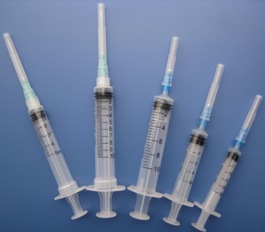Hypodermic Needle

A hypodermic needle, commonly utilized alongside a syringe, serves the
purpose of injecting substances into the body or extracting fluids from it.
It may also be employed for the collection of liquid samples, such as
drawing blood during venipuncture from a vein.
The application of large bore hypodermic needles proves particularly
beneficial in cases of severe blood loss or shock, where swift intervention
is crucial.
These needles facilitate the rapid delivery of liquids, especially when the
substance cannot be ingested, either due to absorption limitations (as with
insulin) or potential liver harm. The injection can be administered through
various routes, depending on the medical requirements.
Typically crafted from stainless steel, hypodermic needles are formed via a
process known as tube drawing, wherein the stainless-steel tube is gradually
reduced in size through dies to shape the needle. The tip is beveled to
create a sharp point, allowing easy penetration of the skin.
The needle gauge indicates its diameter, with various lengths available for
each gauge. Gauging systems like the Stubs Needle Gauge and the French
Catheter Scale are commonly used. Needles range in gauge from 7 (the
largest) to 33 (the smallest) on the Stubs scale. For instance, 21-gauge
needles are often employed for blood drawing, while 16- or 17-gauge needles
are preferred for blood donation as they accommodate the passage of red
blood cells without rupturing them.
While reusable needles are still utilized in certain scientific contexts,
disposable needles are prevalent in medical practice. They feature a plastic
or aluminum hub that connects to the syringe barrel via a press-fit or
twist-on fitting, commonly referred to as "Luer Lock" connections.
Although primarily administered by medical professionals like physicians,
nurses, and paramedics, hypodermic needles are occasionally
self-administered by patients. This is notably observed in type one
diabetics requiring multiple insulin injections daily or individuals with
severe allergies carrying injectable medications for first aid during
allergic reactions. Additionally, patients with multiple sclerosis may
self-administer injections of various therapies designed for subcutaneous or
intramuscular use.
undo Medical Equipment